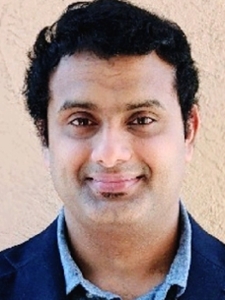OSE Dissertation Defense by Mr. Vineeth Sasidharan on Interferometric Lithography- An approach to large area and cost effective nanopatterning
Departmental News

Posted: November 9, 2021
Date: Wednesday, November 10, 2021
Time: 9:00 AM to 10:30 AM
Location: CHTM, Room 148 and via Zoom
Join Zoom Meeting
https://unm.zoom.us/j/92272016535
Meeting ID: 922 7201 6535
Passcode: 854355
One tap mobile
+12532158782,,92272016535# US (Tacoma)
+13462487799,,92272016535# US (Houston)
Committee members:
Dr. SRJ Brueck, Distinguished Professor (Committee Chair)
Dr. Sang Eon Han, Associate Professor BSME
Dr. Sang M Han, Chair NSMS
Dr. Jean Claude Diels, Professor Physics and Astronomy
Abstract:
In this dissertation interferometric lithography is approached in two different ways to address two important constraints of nanopatterning. One approach solves the problem of scaling up interferometric lithography to wafer scale (4 inch or larger) area. Through the second approach we have developed a nanopatterning technique based on interferometric lithography by using an inexpensive (~$100) diode laser as source, making interferometric lithography a very cost-effective technique.
Wafer-scale large-area nanopatterning was developed using an amplitude grating mask as a grating beam splitter along with spatial averaging of laser intensity by wobbling. The longitudinal and transverse coherence issues both are eased by using grating beam splitters in the place of the Lloyd’s mirror or partially reflecting beam splitters. An inexpensive 1D amplitude mask is used as a grating splitter. Scanning or wobbling of the laser source helps in attaining uniform pattern through averaging effect in spite of Gaussian profile of the light source. 4-inch silicon wafers were successfully nanopatterned with a pitch close to 880 nm. The unique configuration of optical setup makes it really compact and in the future this setup is scalable to pattern 6-inch wafers or larger by changing the size of the optics.
We have also demonstrated an oblique-incidence interferometric nanopatterning using a low-cost multi-longitudinal-mode diode laser as source and a spin-on-glass (SOG) based diffraction-phase-mask grating beam splitter. The phase mask is engineered to have only two, equal intensity orders (0th and -1st), dramatically simplifying the optical arrangement and decreasing the propagation distance between the beam splitter and the sample. The low-cost, high power (150 mW) TEM00 405-nm diode laser operates with a large number of longitudinal modes, resulting in an impractical mask-to-sample-gap proximity requirement with a single grating beamsplitter. A dual-grating-mask, achromatic interferometric scheme is introduced to extend this gap dimension to easily accessible scales. Uniform nanopatterns with a periodicity of 600 nm were fabricated over a 1 cm diameter area using this multimode diode laser. This technique is scalable and has the potential for large area nanopatterning applications.
